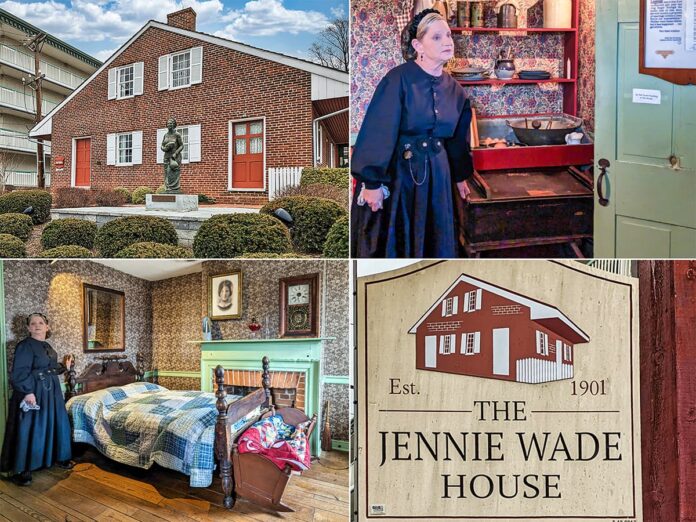
If you’re looking for information about visiting the Jennie Wade House in Gettysburg, you’re in the right place!
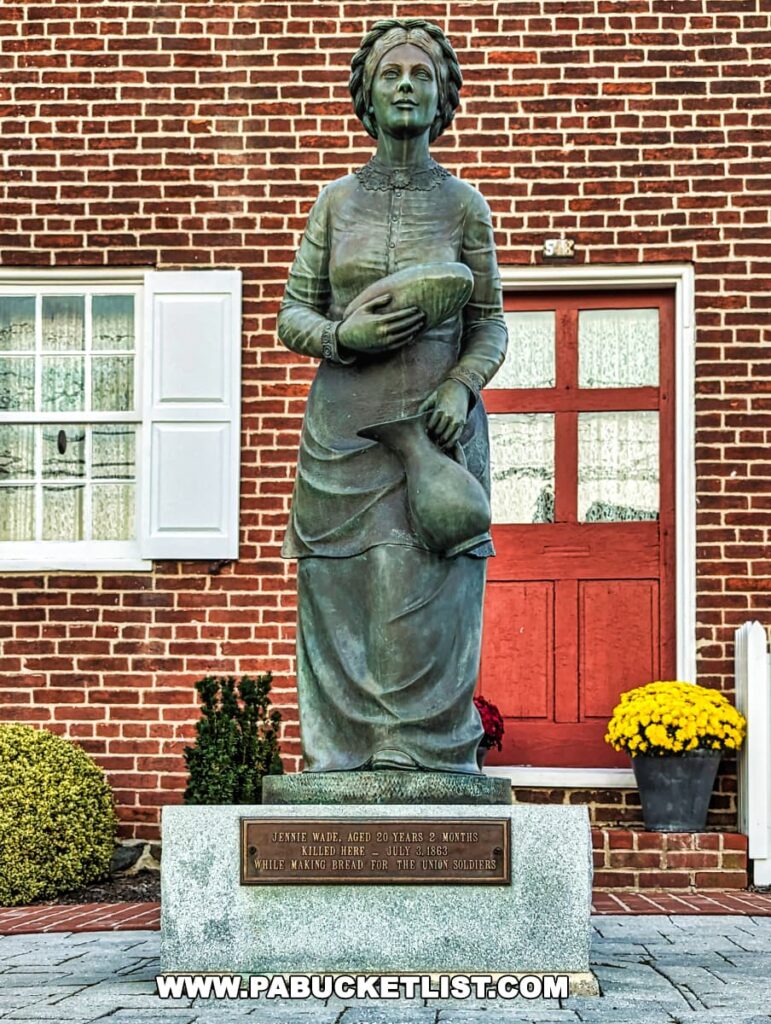
The Jennie Wade House is a historic landmark that memorializes the life and untimely death of Jennie Wade, the only civilian killed during the Battle of Gettysburg.
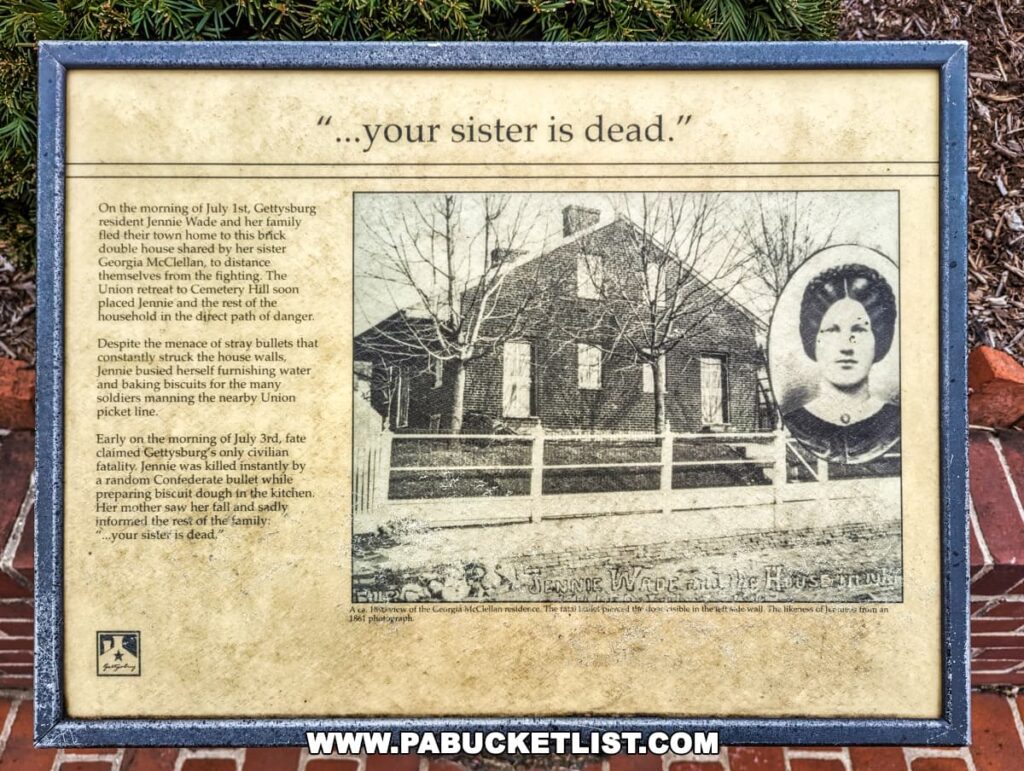
Mary Virginia Wade, better known as Jennie, was a young woman of just 20 when she was caught in the crossfire of a war that would shape America’s future.
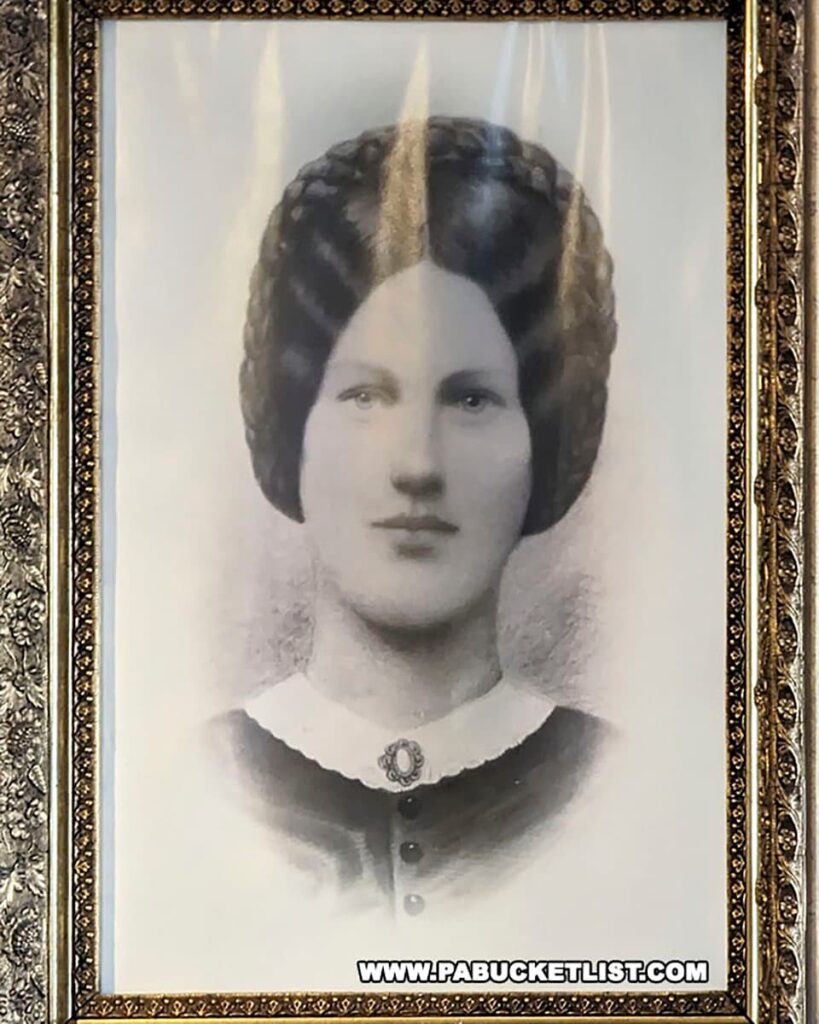
On July 3, 1863, while diligently making bread for Union soldiers, Jennie was struck by a stray bullet, sealing her place in history and in the hearts of many.
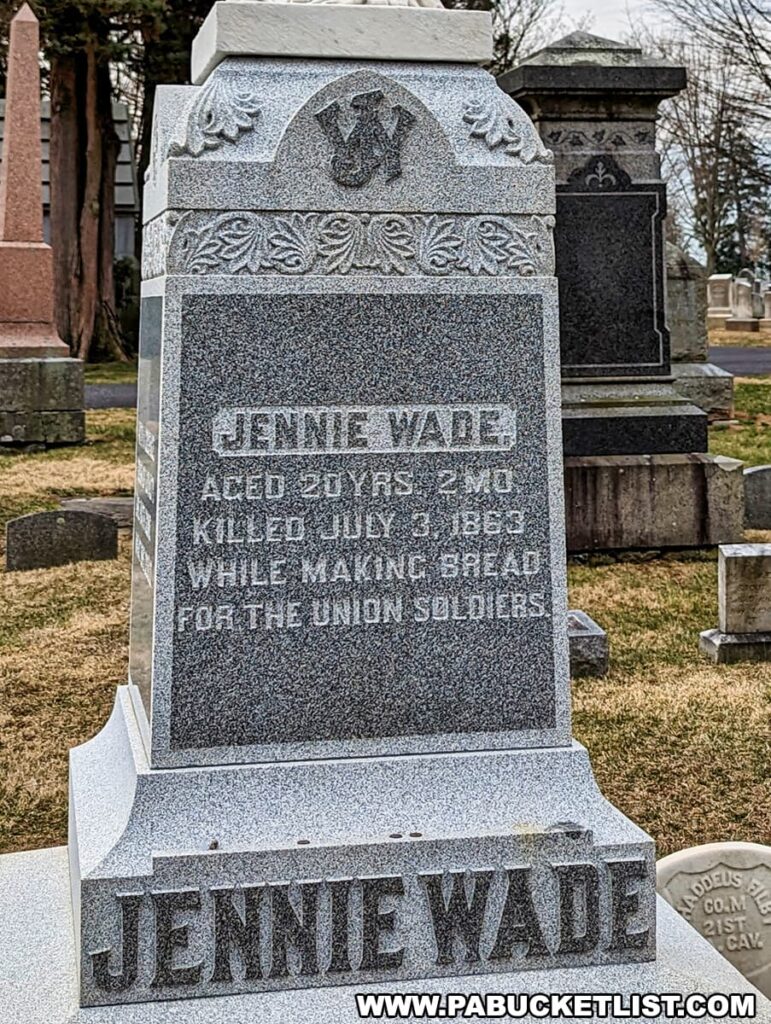
Today the house where Jennie Wade was killed is operated as a shrine to Jennie and as a museum, offering a poignant glimpse into the impact of the Battle of Gettysburg on civilians.
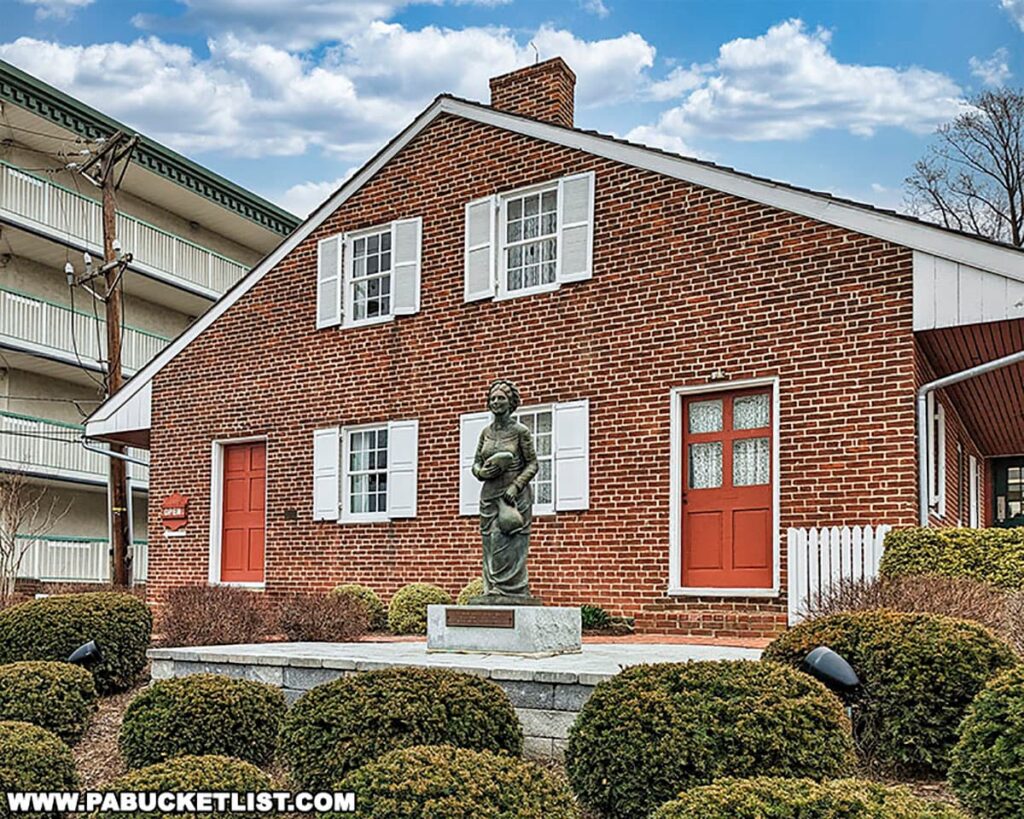
Directions | Hours | Admission Prices
The house is located at 548 Baltimore Street, Gettysburg, PA 17325.
The museum’s days/hours of operation vary with the seasons, but it is generally open March-December – check out the Jennie Wade House OFFICIAL WEBSITE for the most up-to-date days/hours.
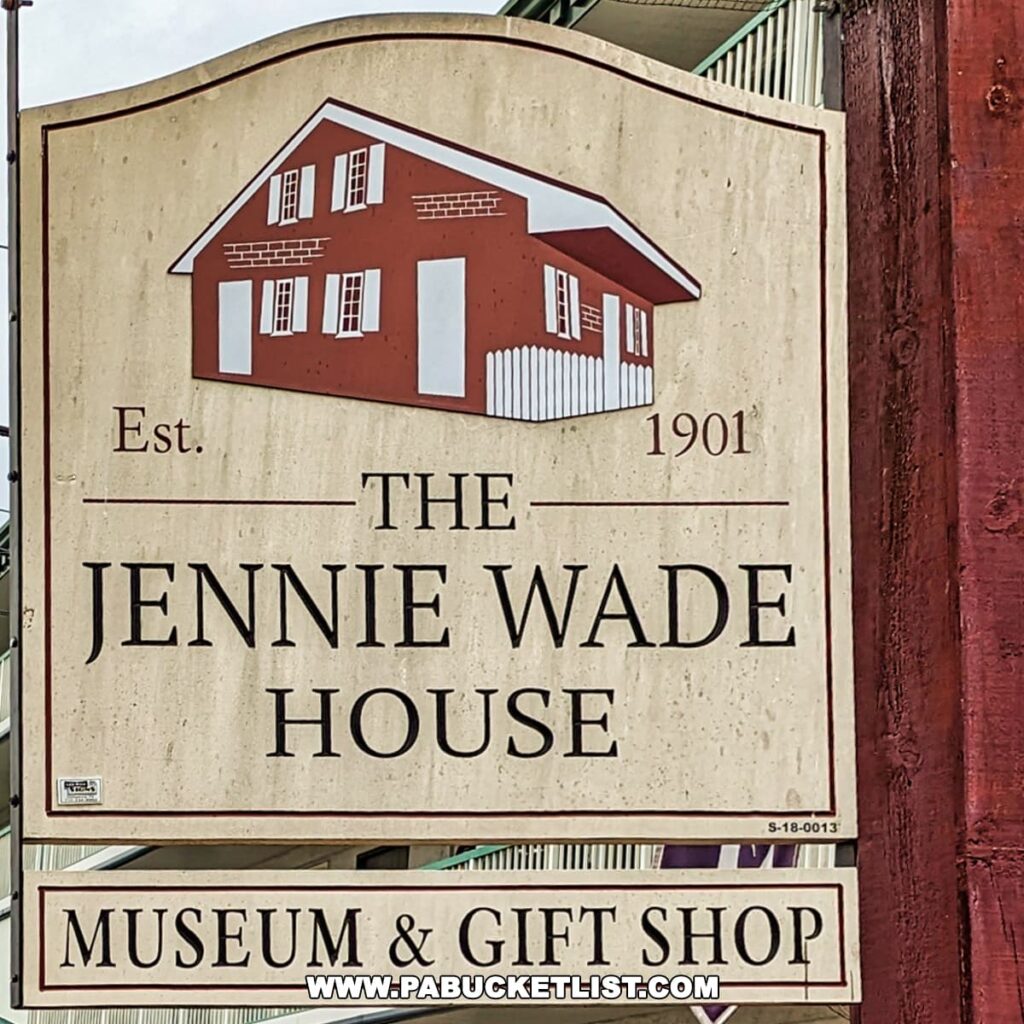
Admission prices as of 2023 are: Adults: $12.00 | Children ages 6-12: $9.00 | Children 5 and under: Free.
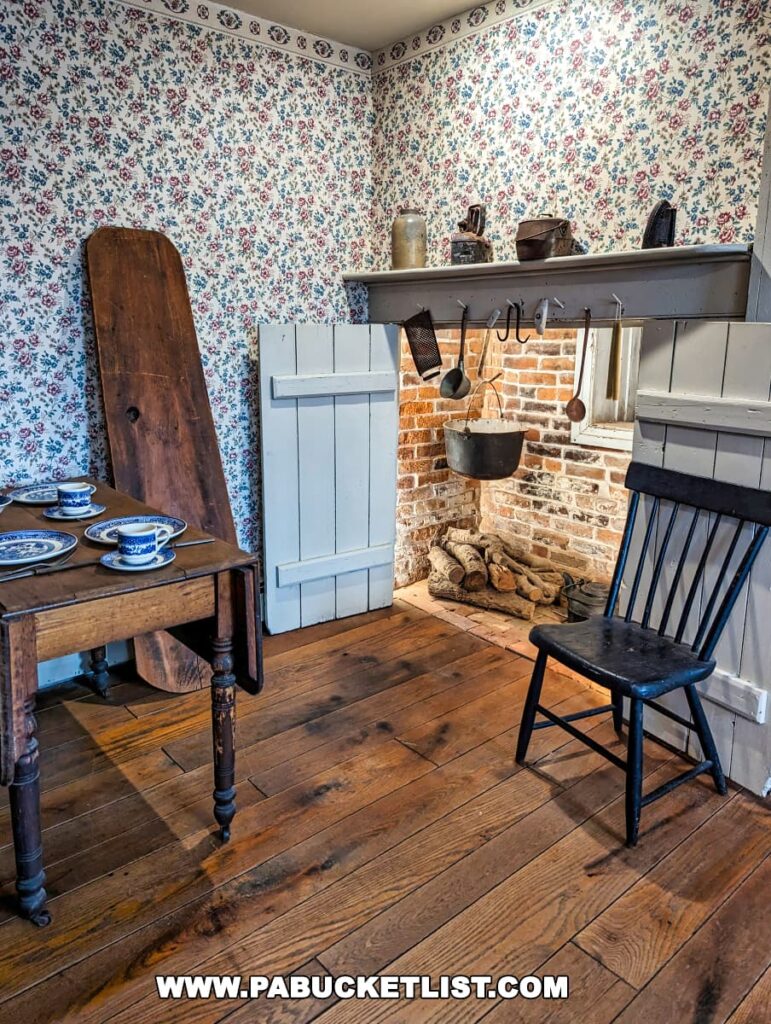
Touring the Home
A tour guide, dressed in period attire, welcomes you inside, ready to share stories that bring Jennie’s world to life.
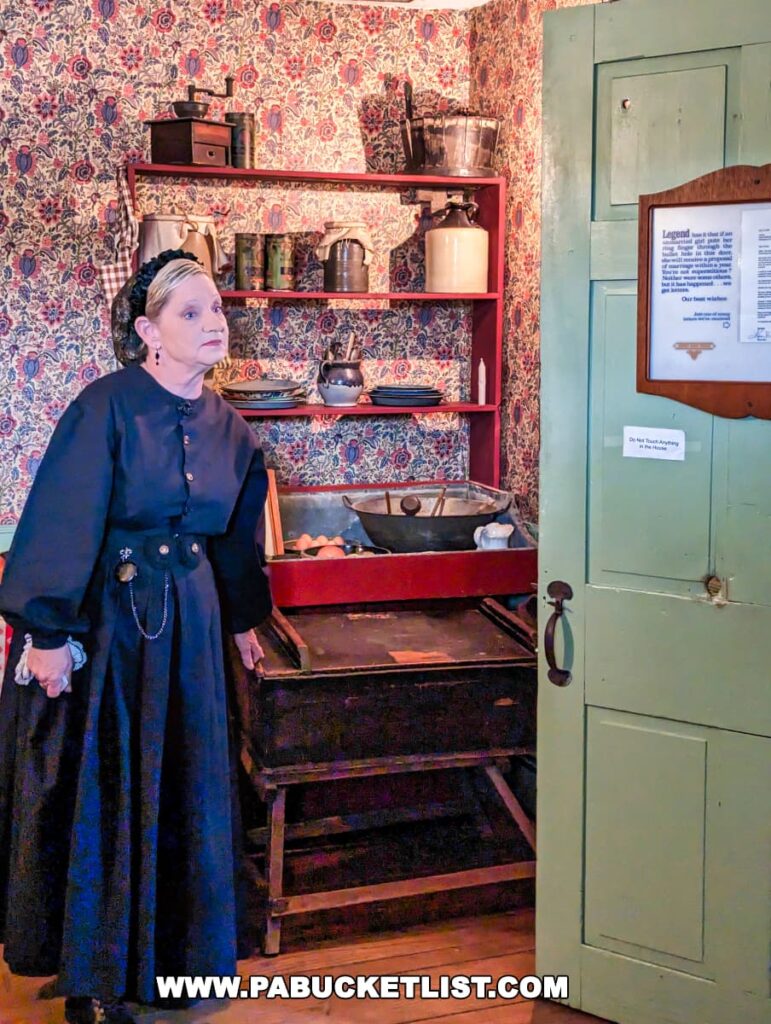
Each room of the Jennie Wade House is preserved to reflect the era accurately.
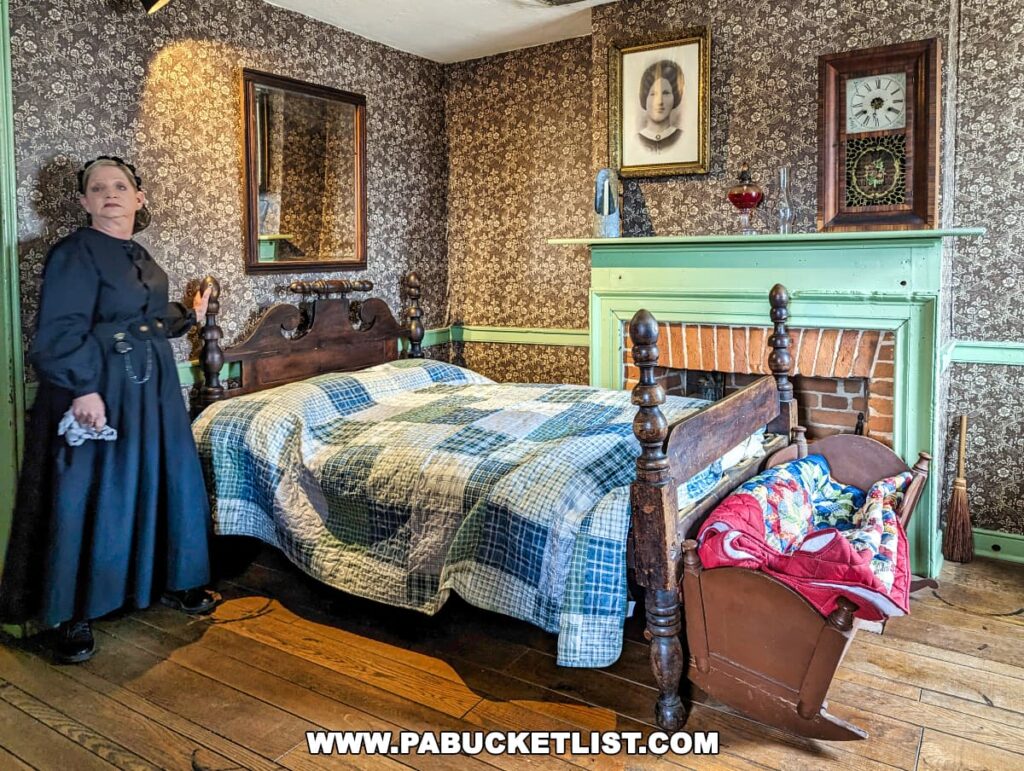
From the kitchen where Jennie met her untimely end, the setup is such that you can almost hear the echoes of 1863 Gettysburg.
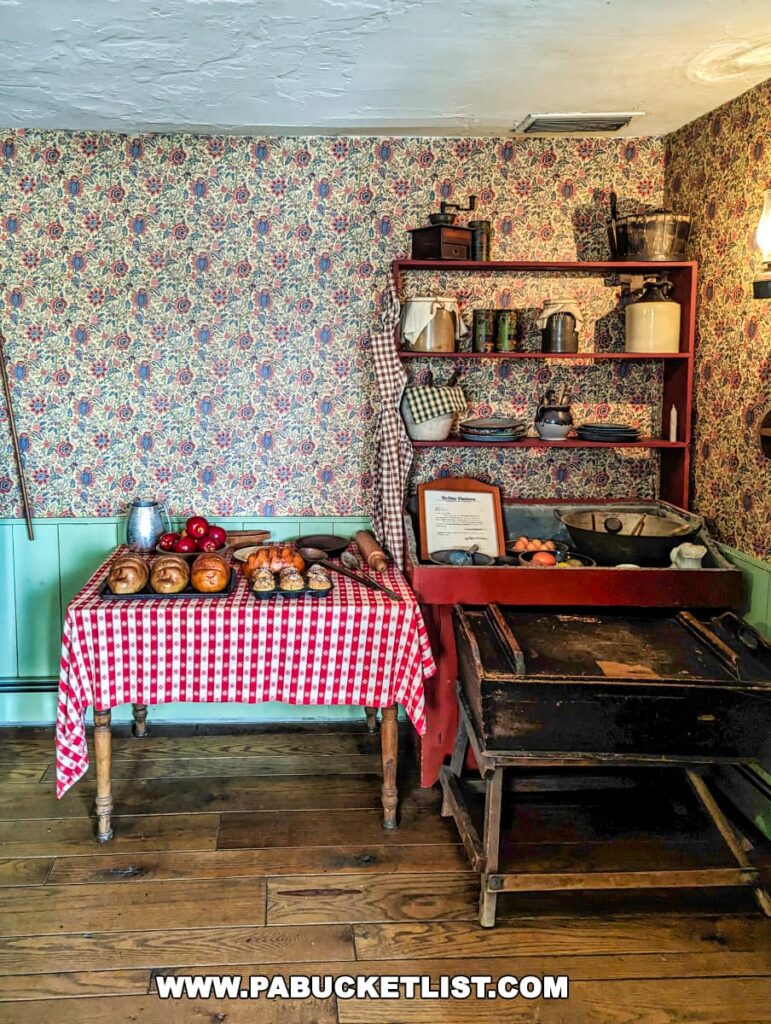
The guides do an excellent job of narrating the events leading up to Jennie’s death, providing context to the artifacts and bullet holes that mark the walls.
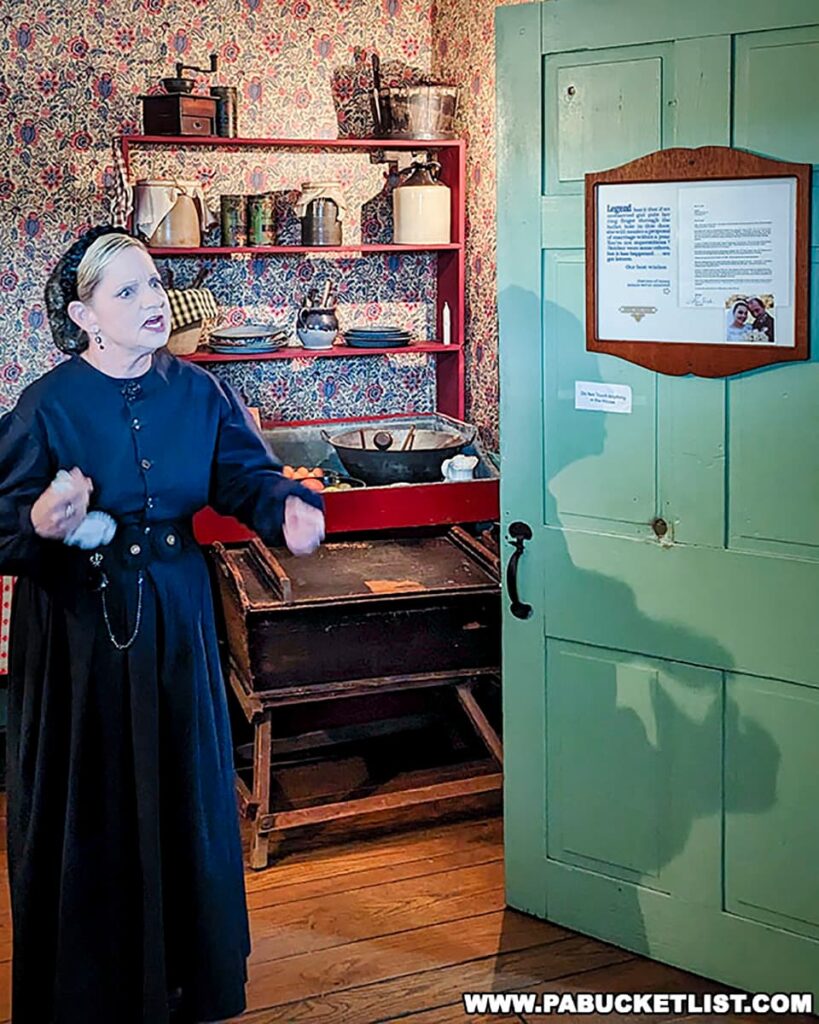
At approximately 8:30 am on July 3rd,1863, a stray bullet passed through both an exterior and interior door of the home, killing Jennie while she was kneading dough.
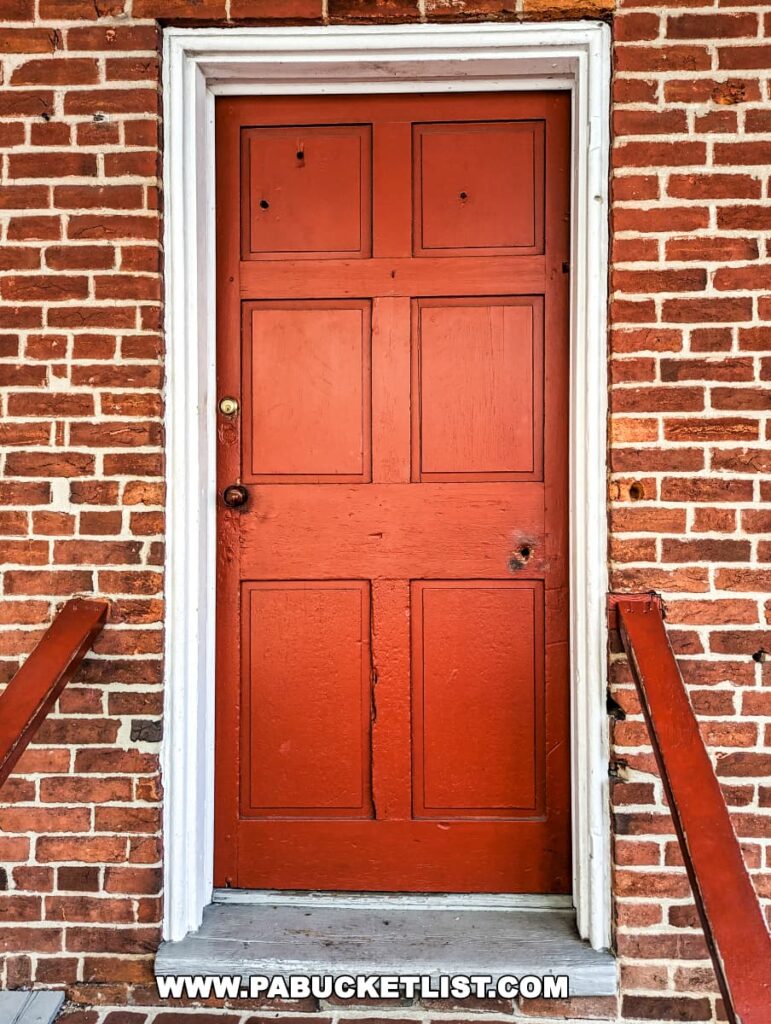
Union soldiers carried Jennie’s body to the cellar, wrapped in a quilt.
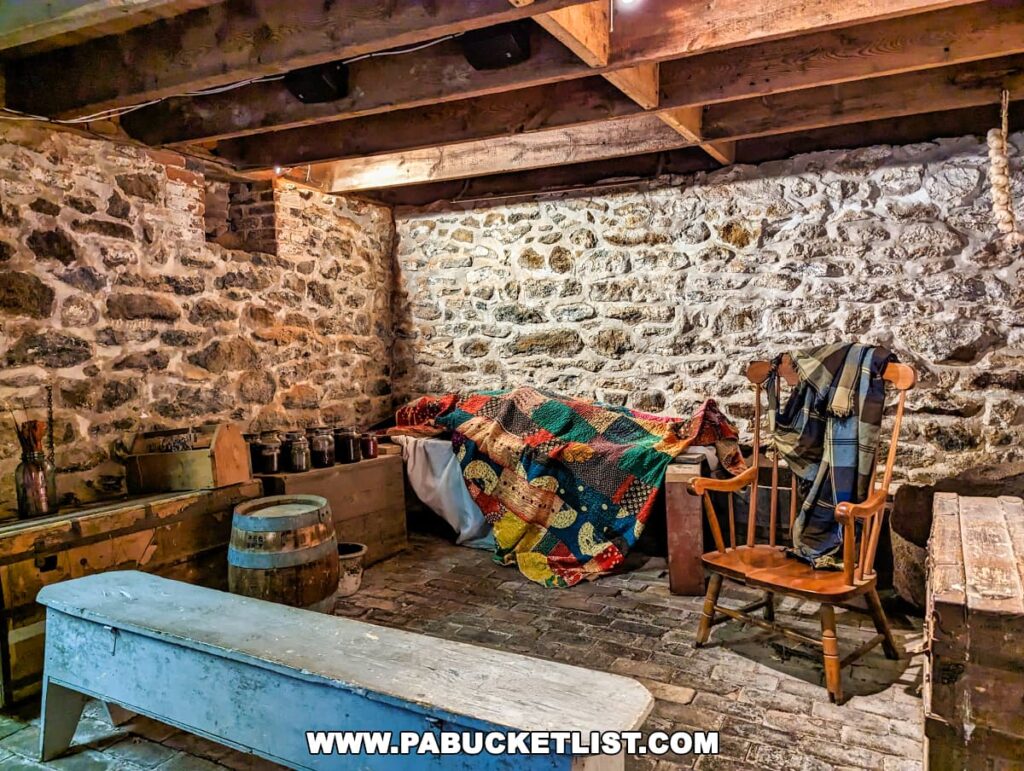
It’s estimated that more than 150 bullets hit the house during the three days of fighting.
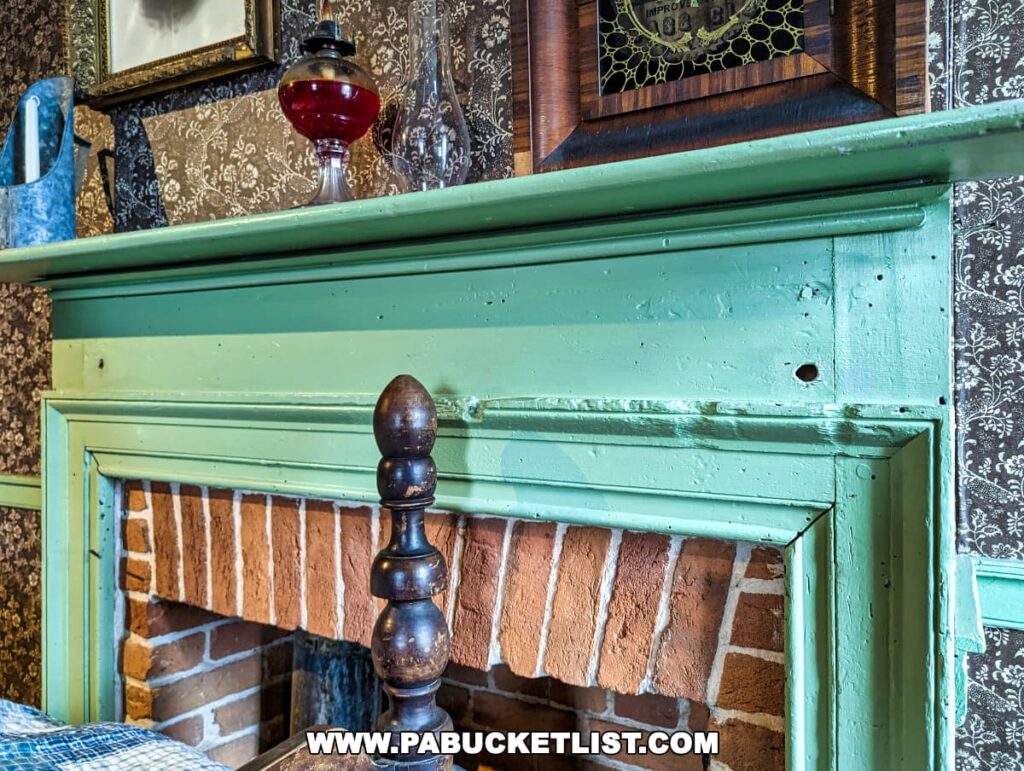
A Confederate shell came through the roof of the home and knocked a hole in an interior wall.
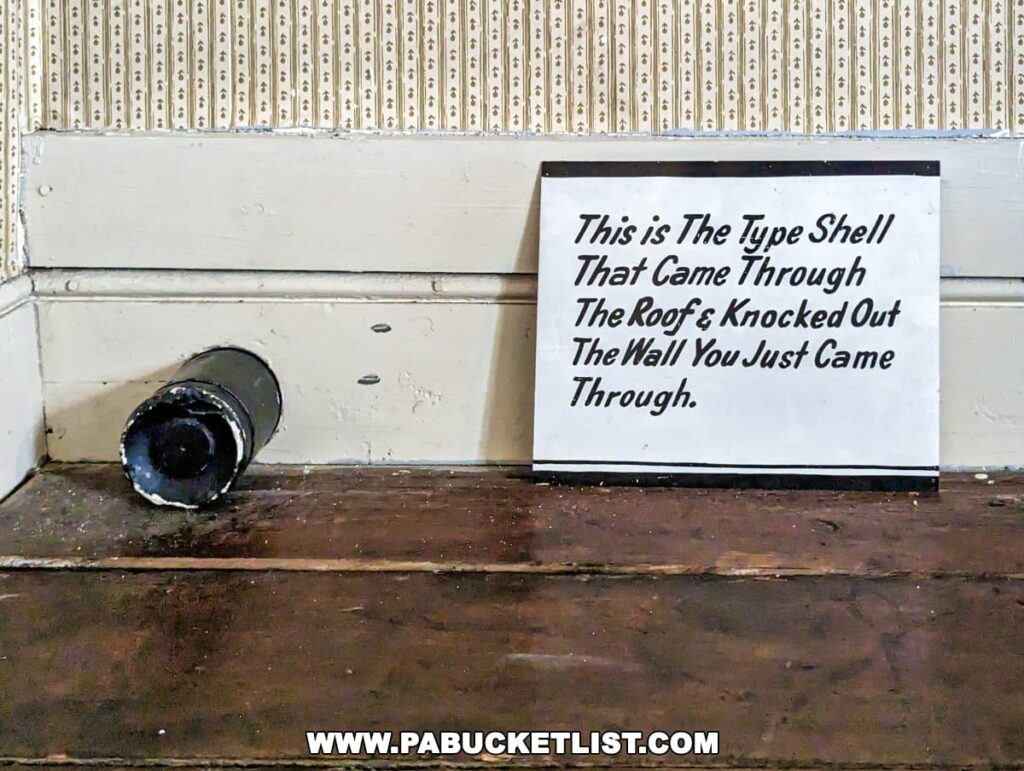
Today you walk through that hole as part of the tour.
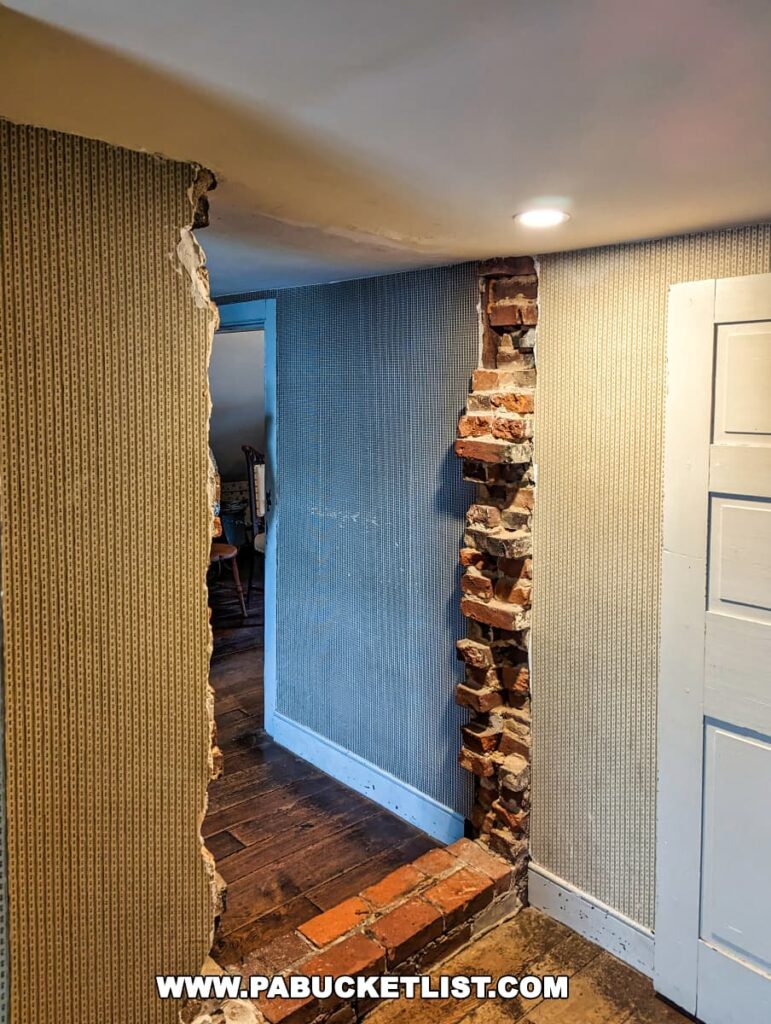
The Legend Lives On
One of the most unusual aspects of the house is the legend which says that if an unmarried woman passes her ring finger through the bullet hole in the interior door, she will be proposed to within a year.
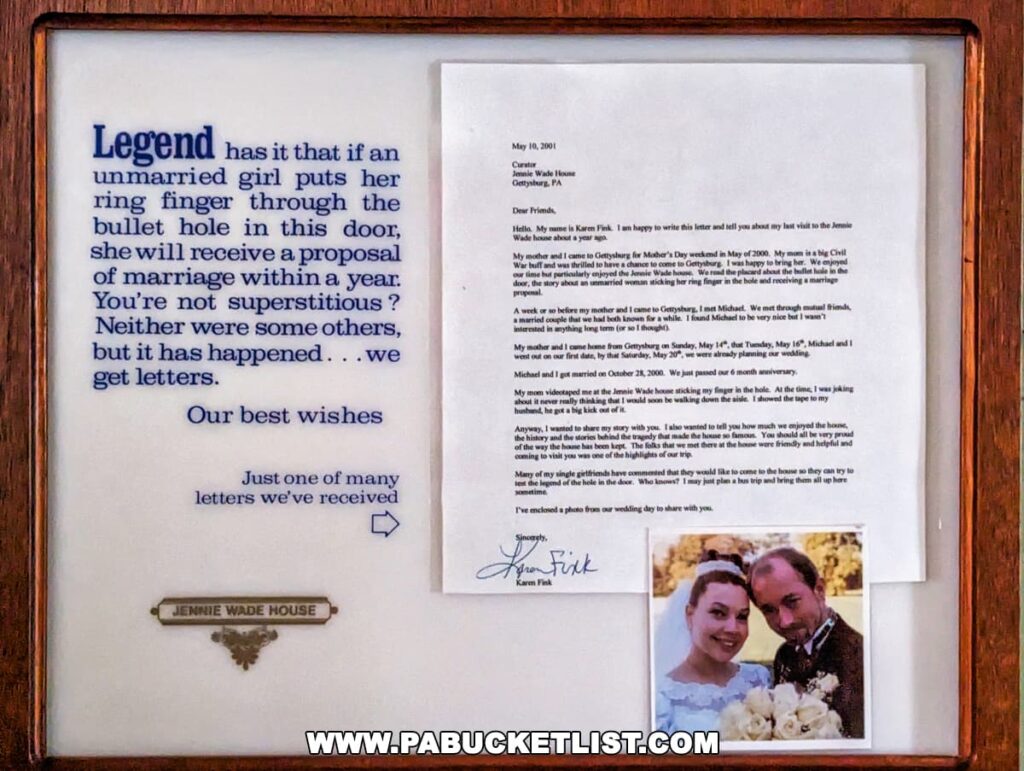
Whether you’re superstitious or not, this odd tale adds a peculiar layer of human interest to the Jennie Wade story.
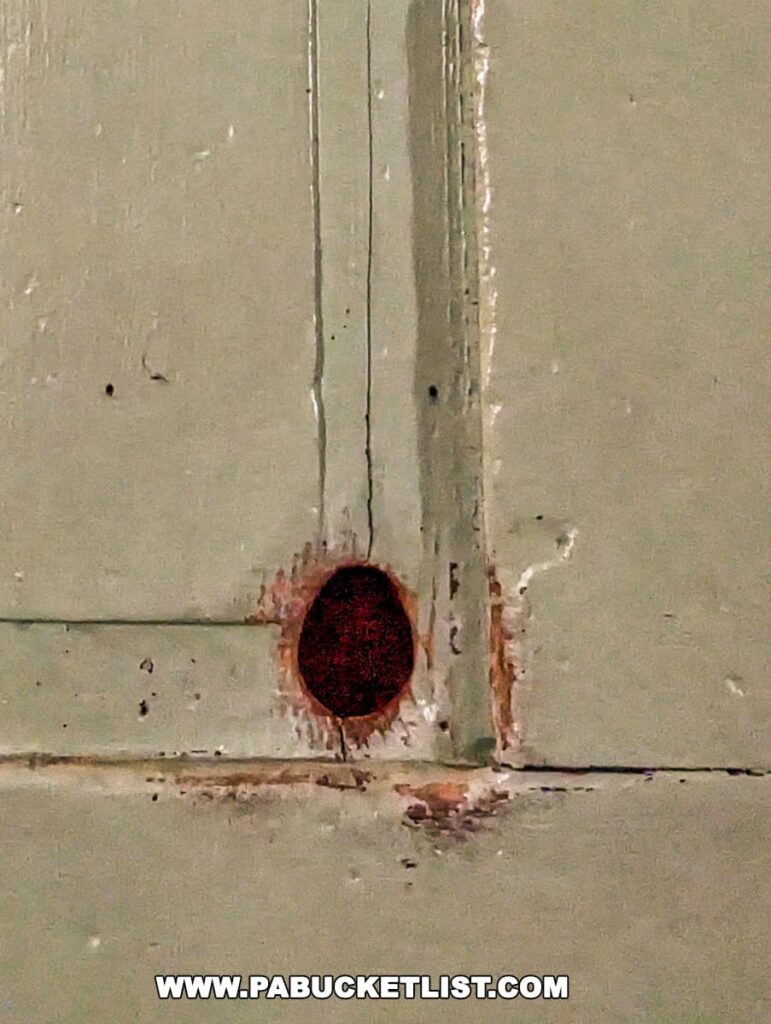
Reflections at the Grave
A visit to the house wouldn’t be complete without paying your respects at Jennie’s final resting place in nearby Evergreen Cemetery.
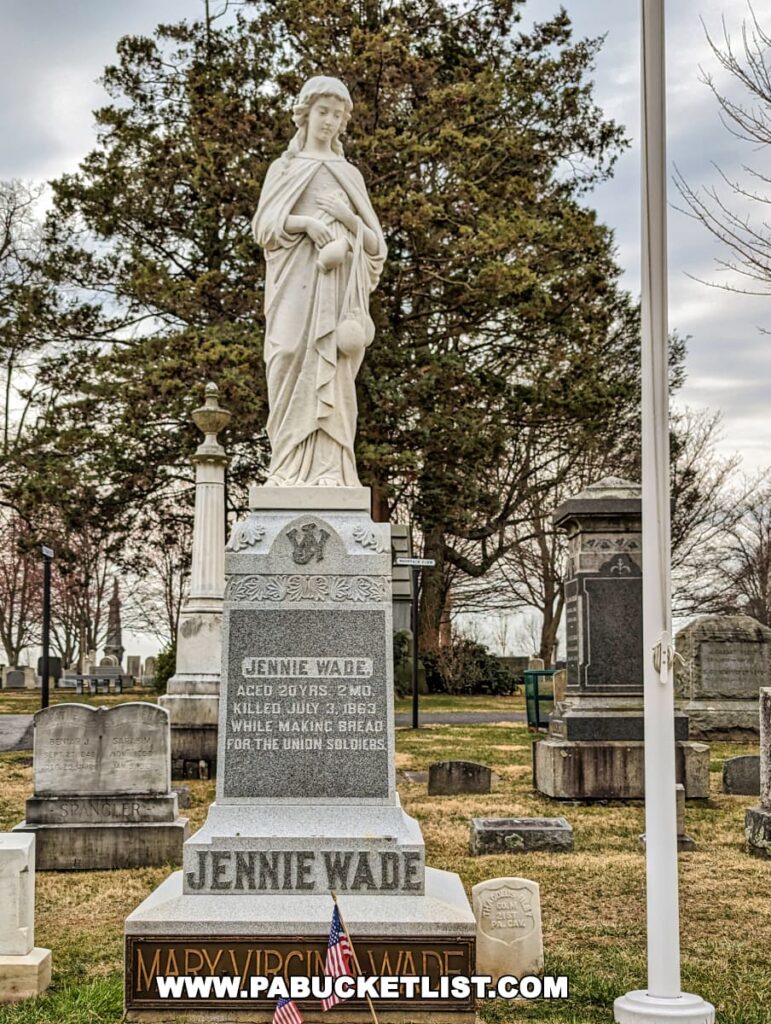
A monument marks her final resting place, as well as a perpetual American flag that flies day and night.
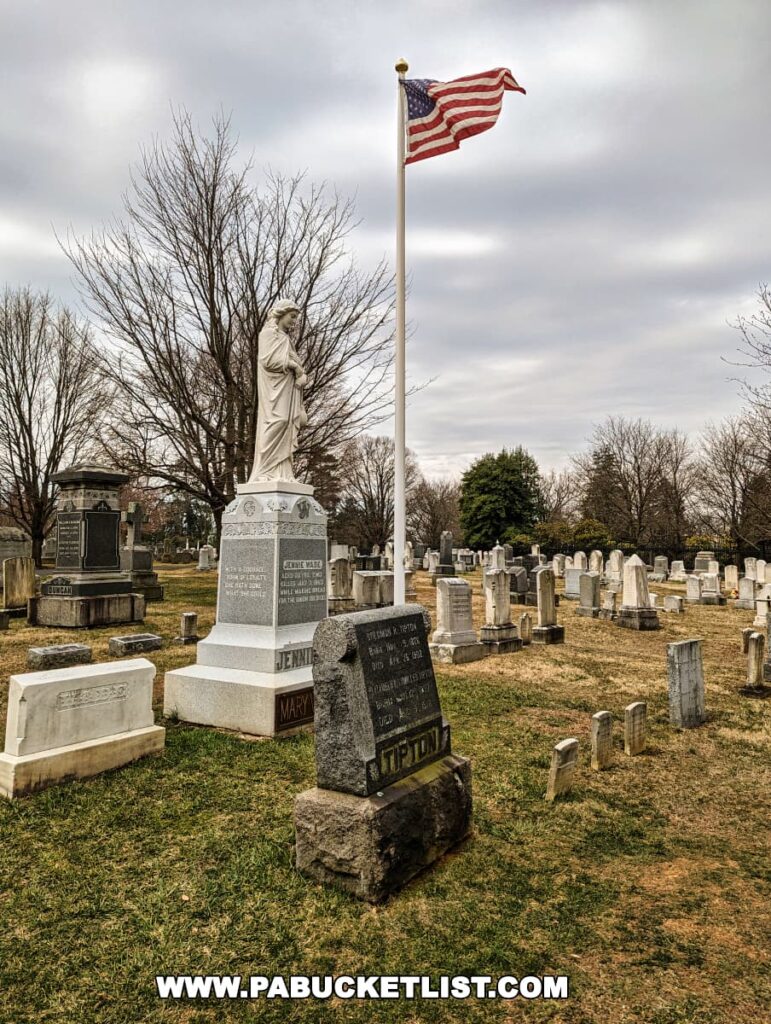
The only other woman to claim that honor is Betsy Ross.
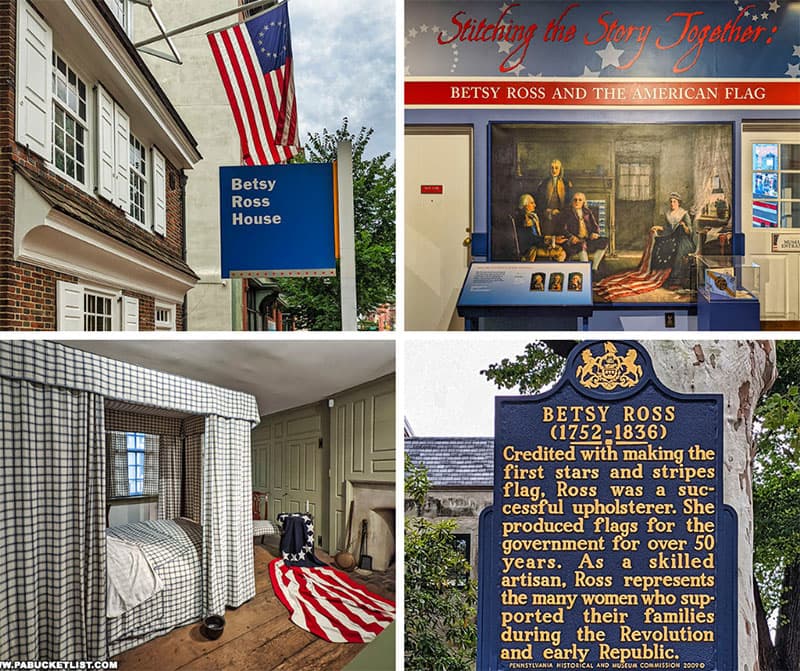
Jennie Wade Birthplace
You can also visit the house where Jennie Wade was born, just a few blocks from where she died.
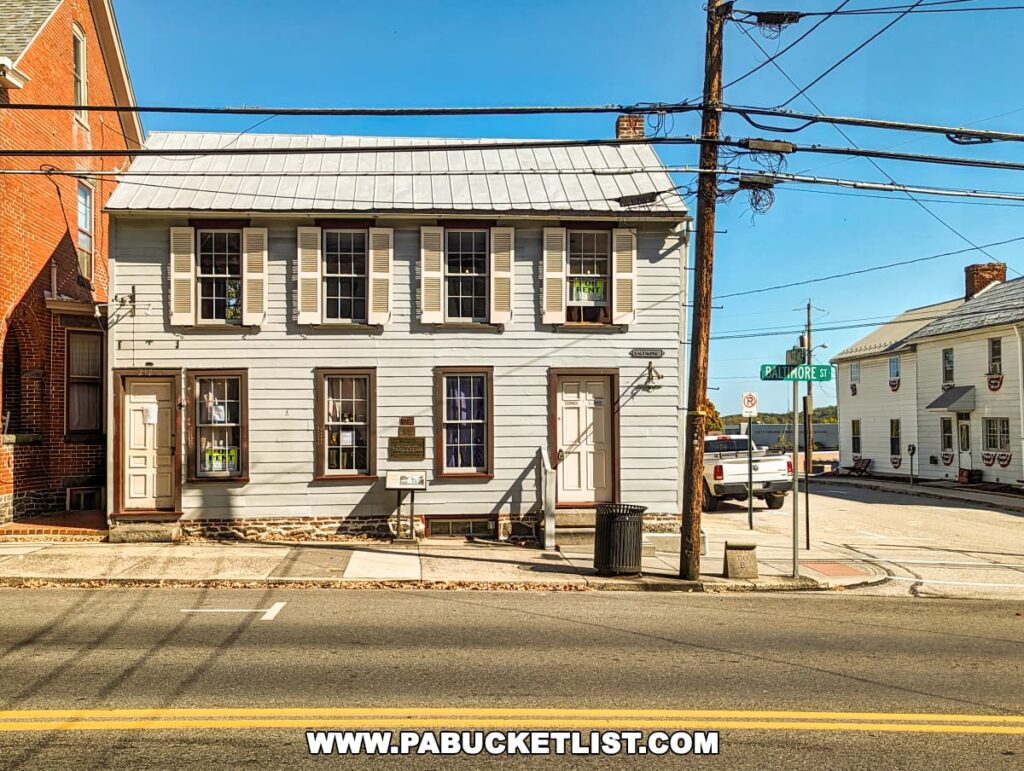
While you cannot tour the inside of the house, there is an informational display in front of the house.
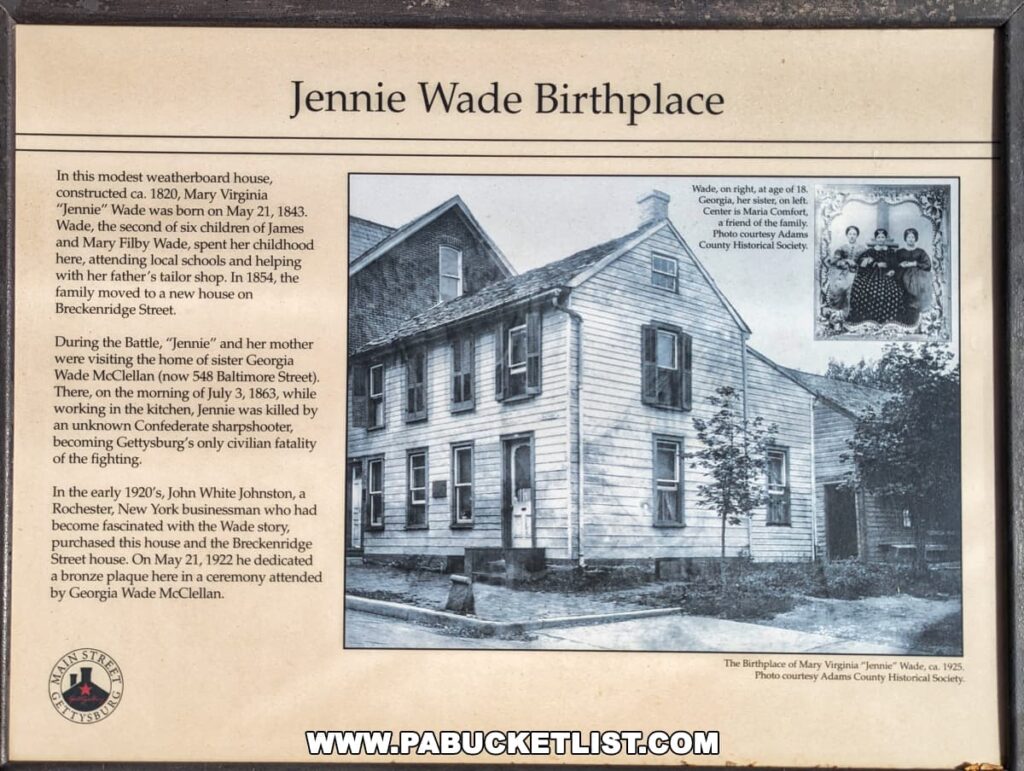
If you’d like to see the Jennie Wade Birthplace, it’s located at 242 Baltimore Street in Gettysburg.
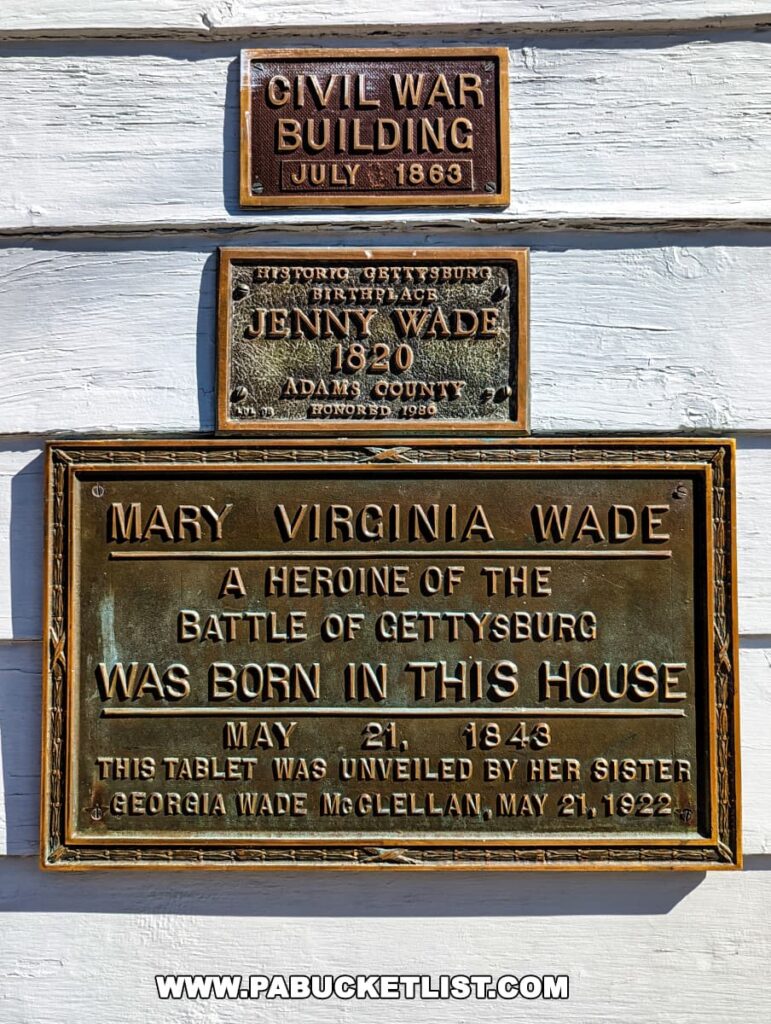
Final Thoughts
A visit to the Jennie Wade House is a reminder of the personal stories woven into the fabric of our nation’s history, often overshadowed by the grand narratives of battles and generals.

For anyone looking to immerse themselves in Civil War history or gain a better understand the civilian sacrifices during this pivotal moment in American history, a visit to the Jennie Wade House in Gettysburg is a must.
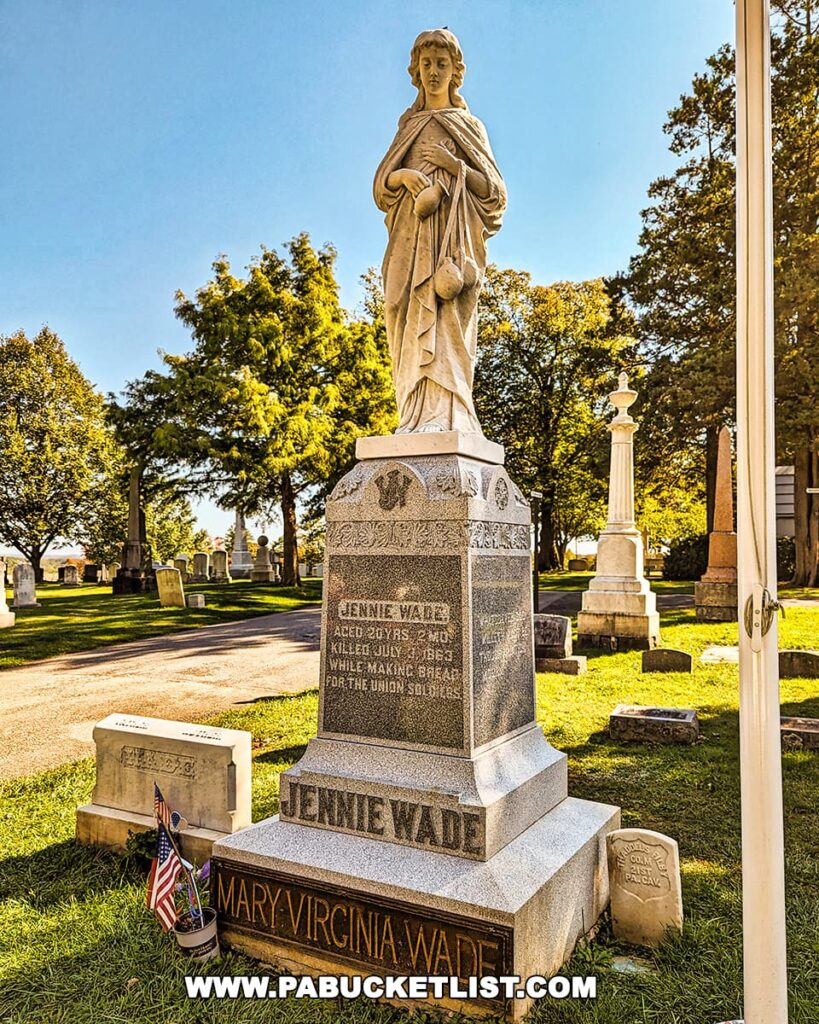
Nearby Attractions
Exploring the Battlefield at the Gettysburg National Military Park is your guide to the 6,000 acre park that preserves the ground on which one of the defining events in our nation’s history took place.
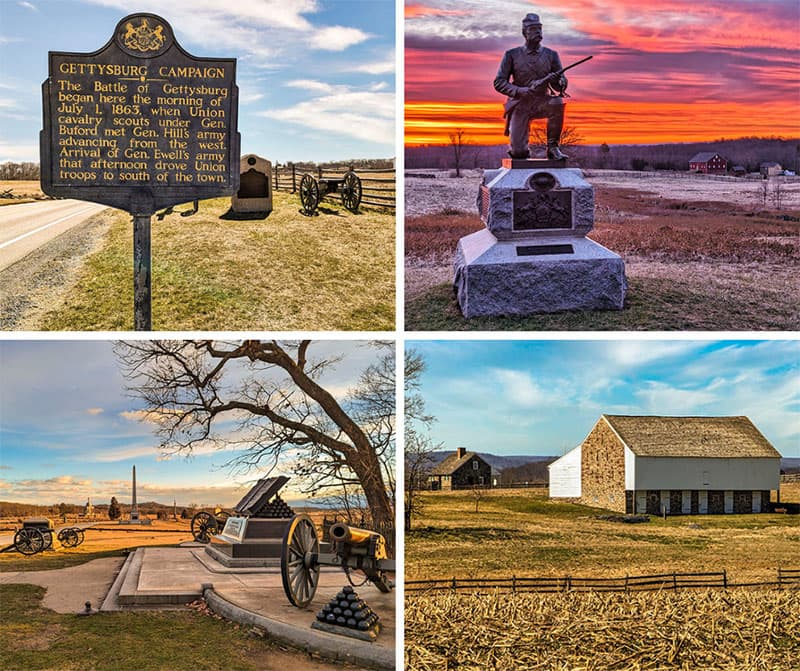
The Soldiers’ National Cemetery in Gettysburg is some of the most historic and hallowed ground in Pennsylvania, transformed into the final resting place for over 3,000 fallen Union soldiers in the months after the battle.
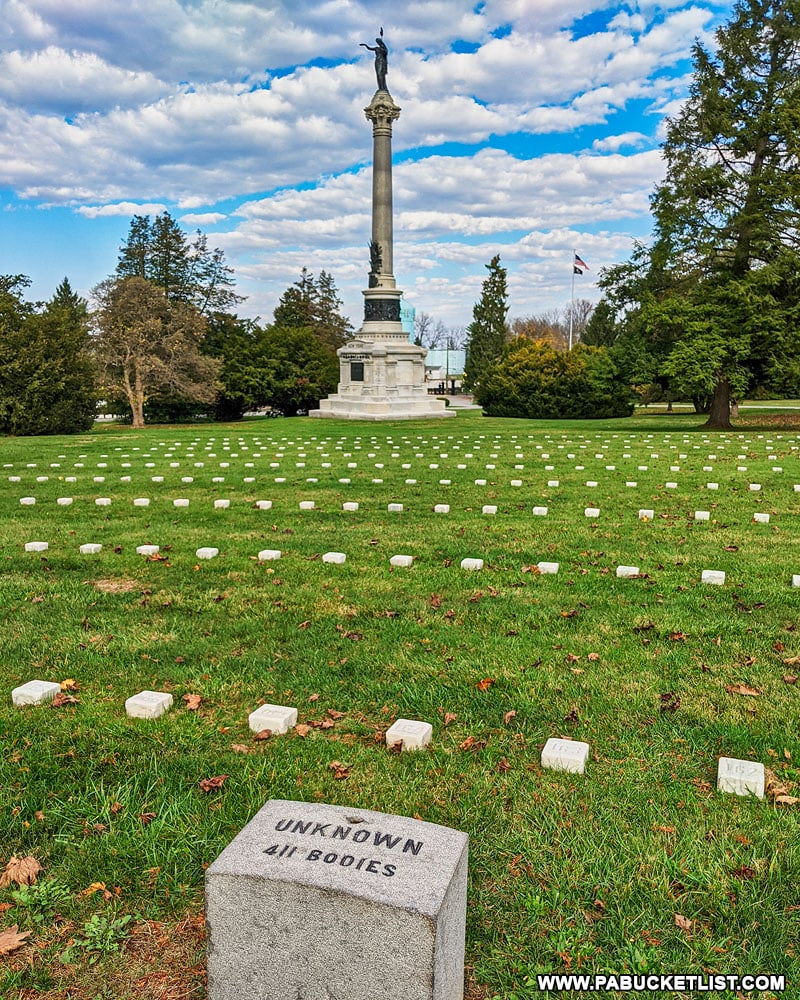
The Gettysburg Diorama & History Center recreates the famous Civil War battle using one of the largest military dioramas in the United States.
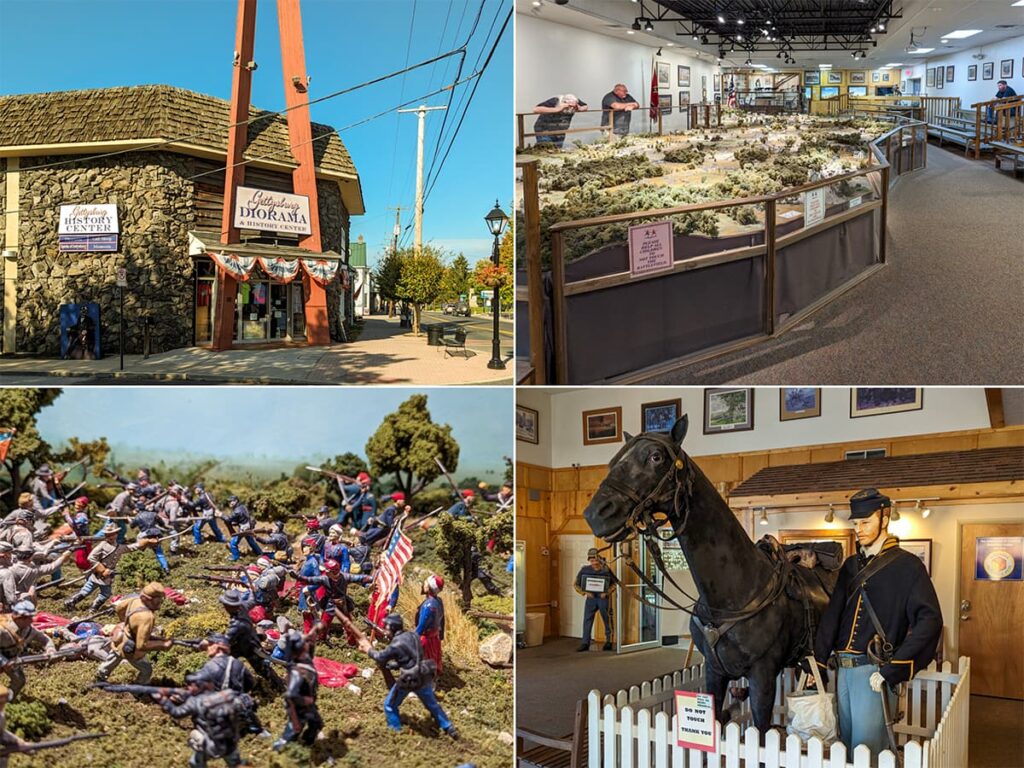
Exploring the Gettysburg Beyond the Battle Museum is your guide to Gettysburg’s newest history museum, which tells the stories of local residents before, during, and after the epic Civil War battle that took place there.
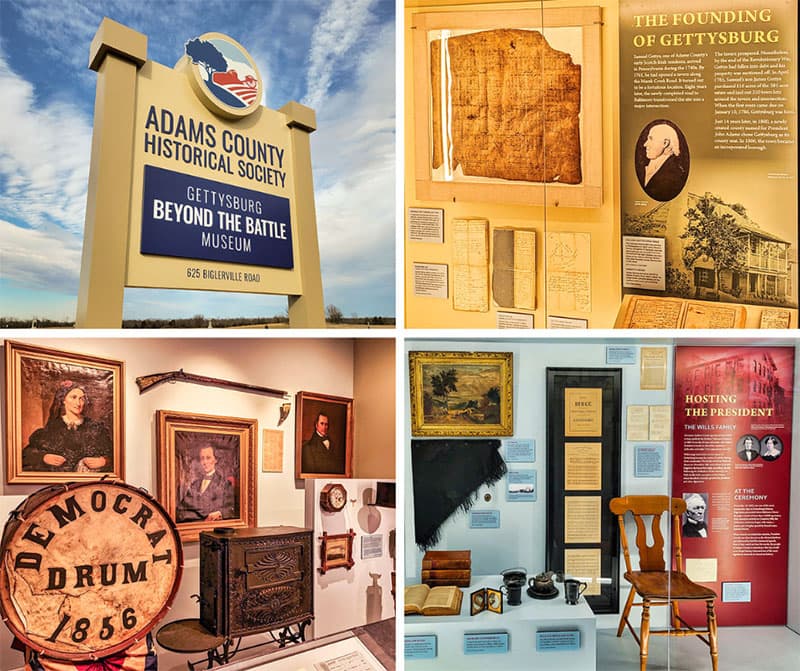
The former Lutheran Seminary in Gettysburg, now the Seminary Ridge Museum, served as both an observation post and a hospital during the Battle of Gettysburg.
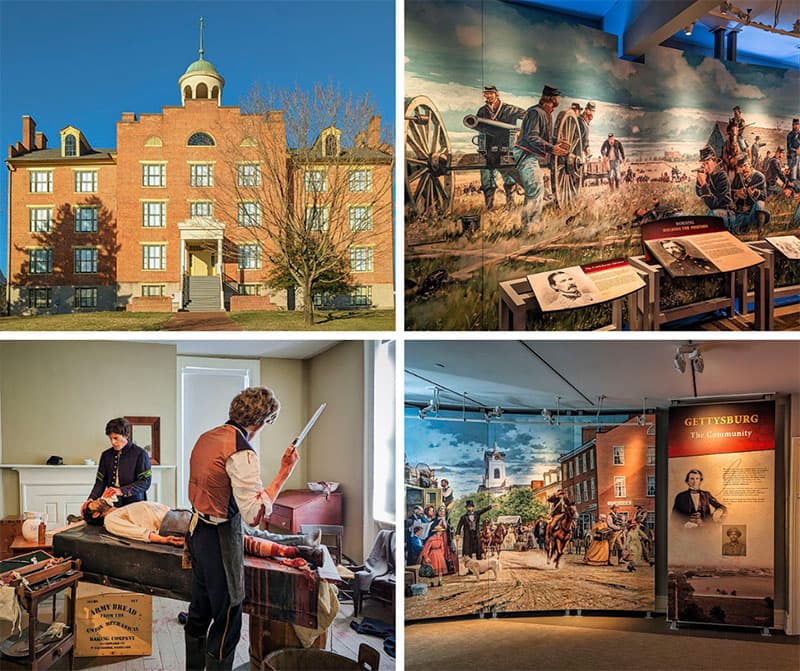
The Gettysburg Museum of History is home to thousands of unusual artifacts and atypical antiquities from American history, and admission is FREE!
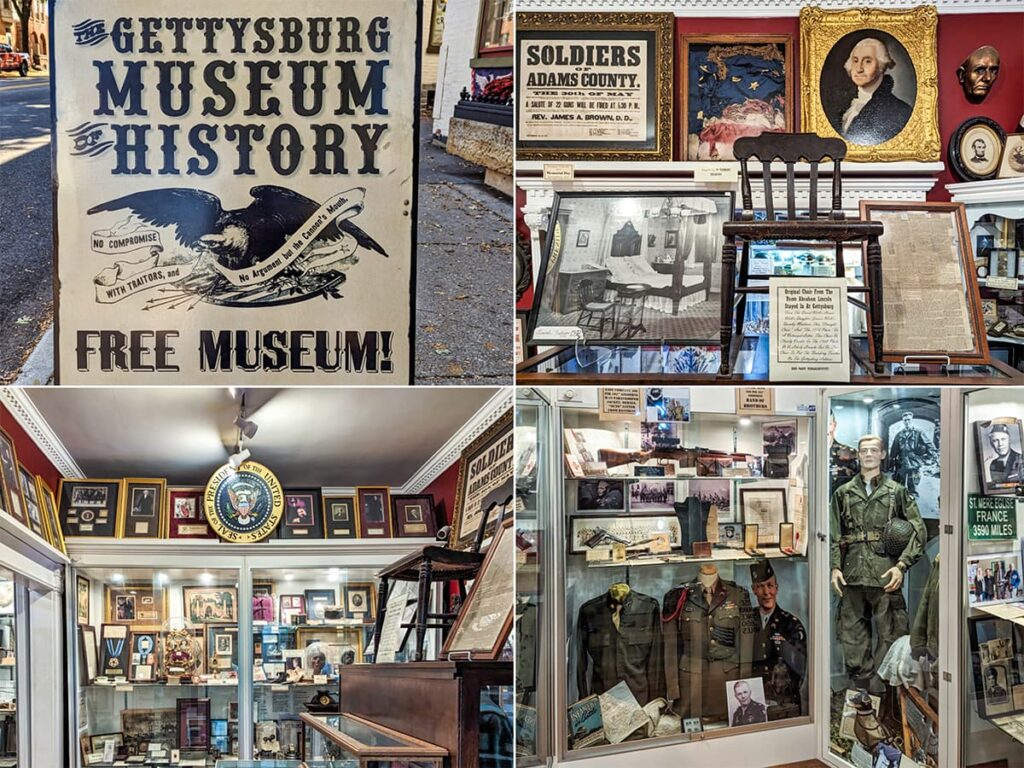
Sachs Covered Bridge was crossed by both Union AND Confederate troops during the Battle of Gettysburg, and was designated “Pennsylvania’s most historic covered bridge” in 1938 by the PA Department of Highways.
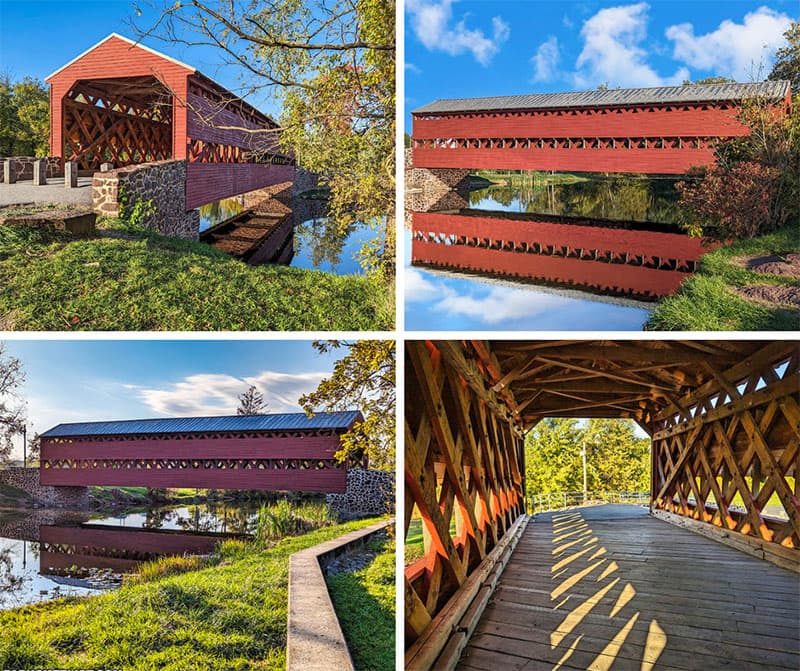
12 Must-See Attractions in Gettysburg is your guide to even more great things to see near the Jennie Wade House.
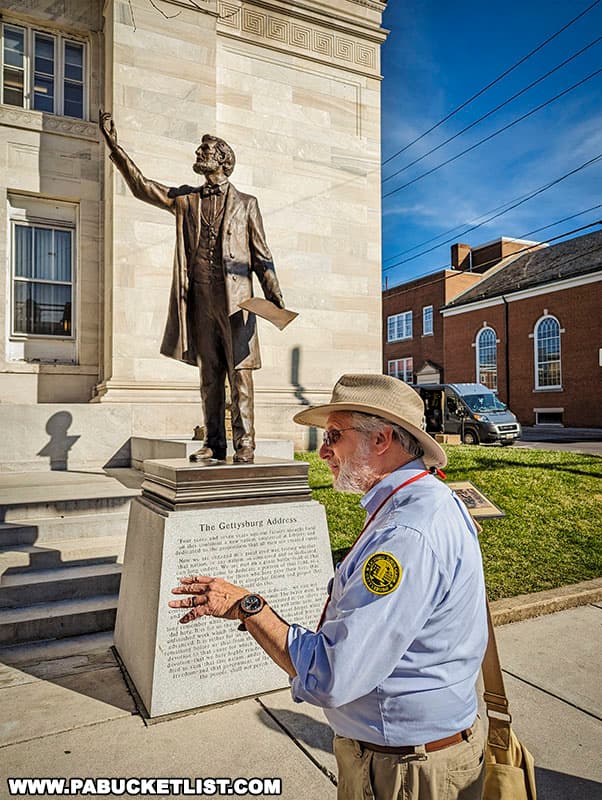
Did you enjoy this article?
If so, be sure to like and follow PA Bucket List on Facebook, Instagram, and/or Pinterest to learn more about the best things to see and do in Pennsylvania!
Click on any of the icons below to get connected to PA Bucket List on social media.


